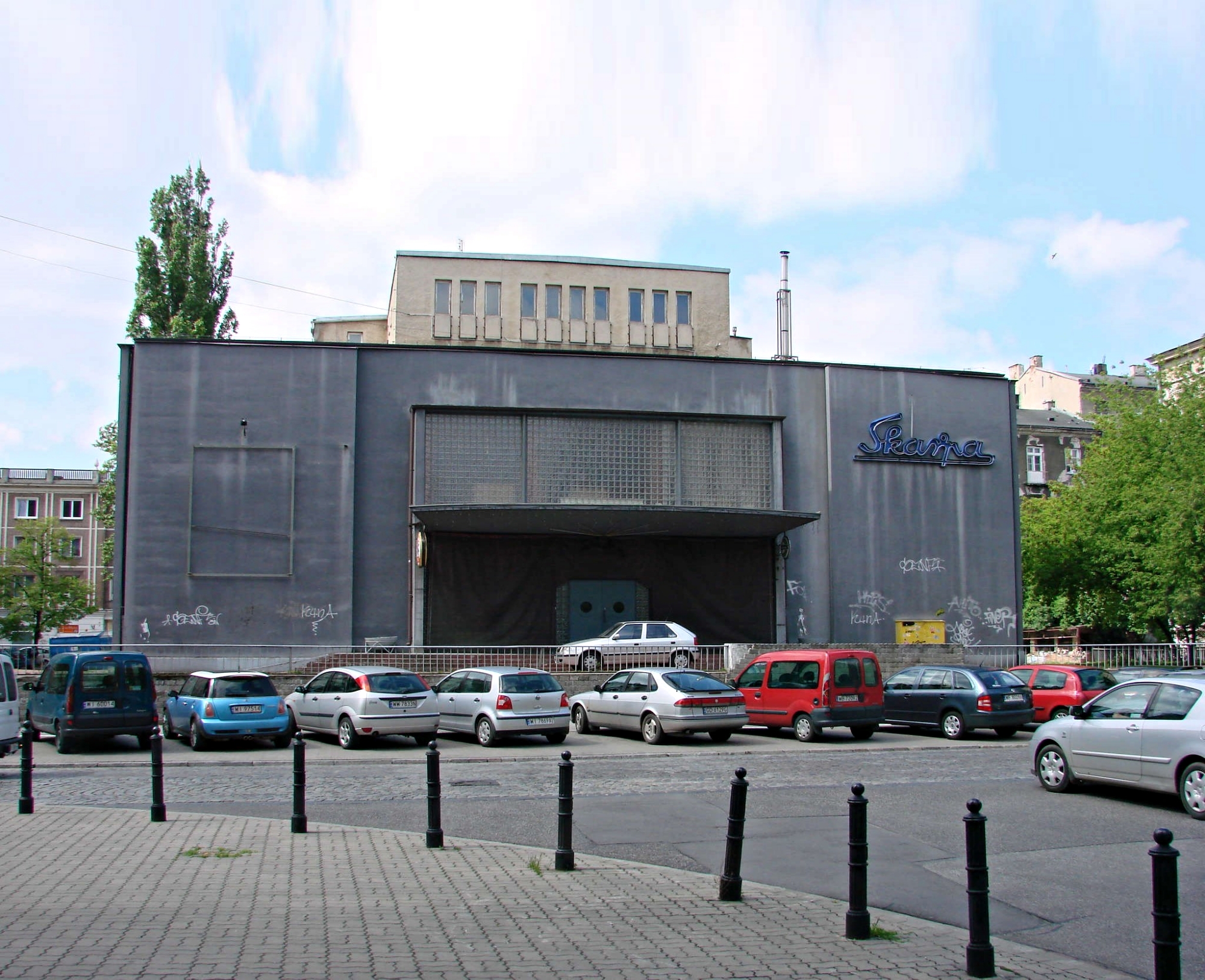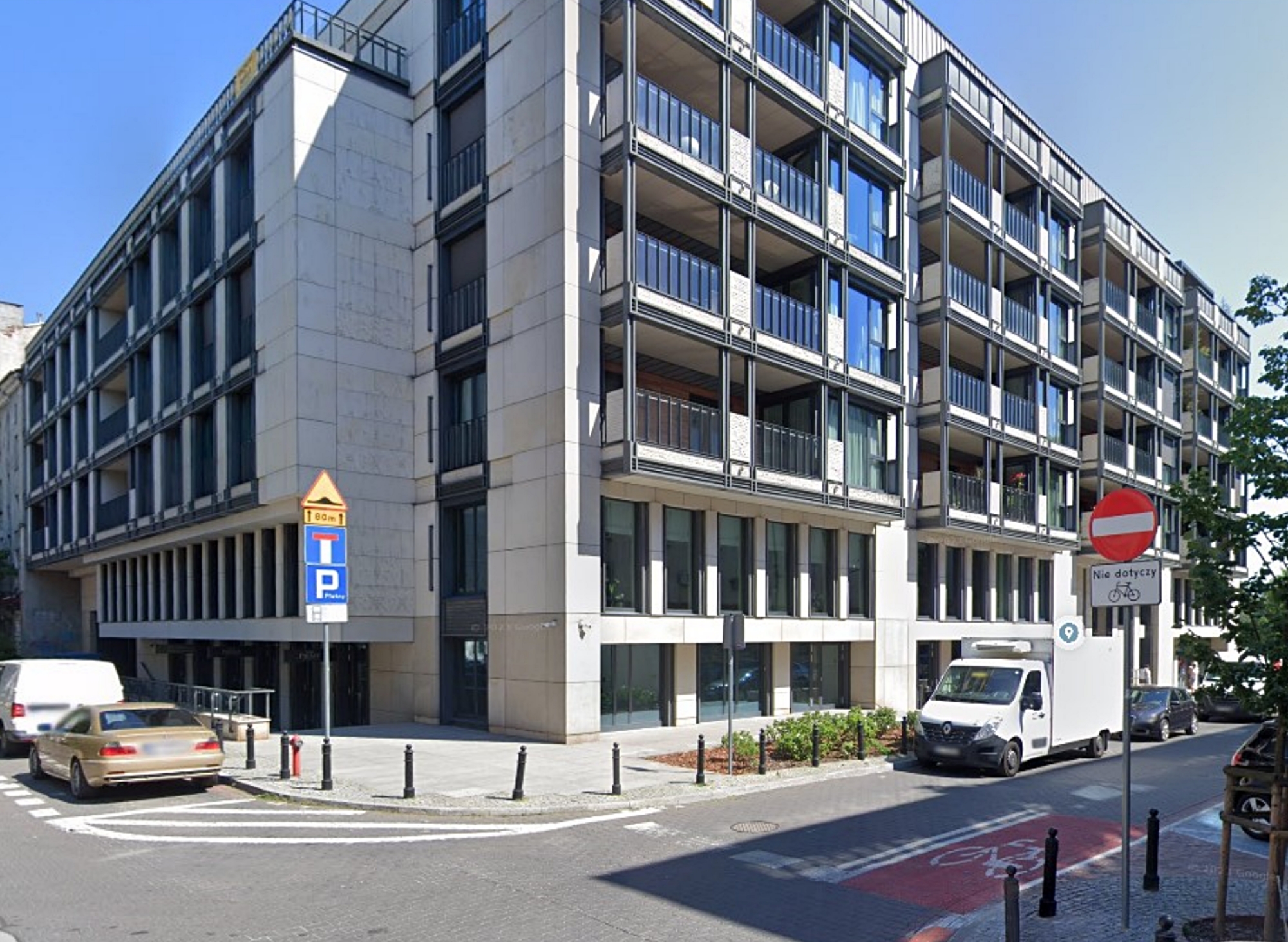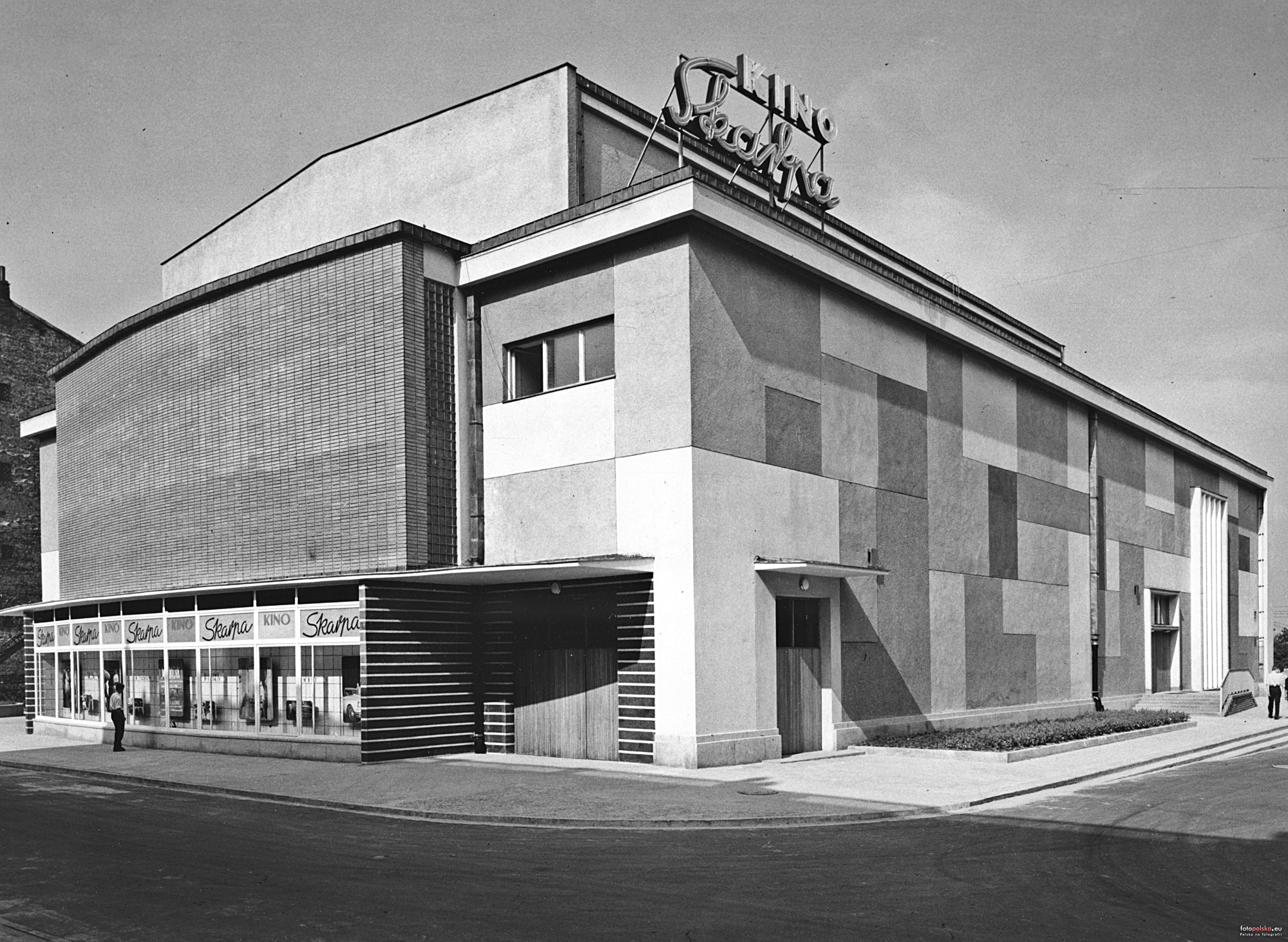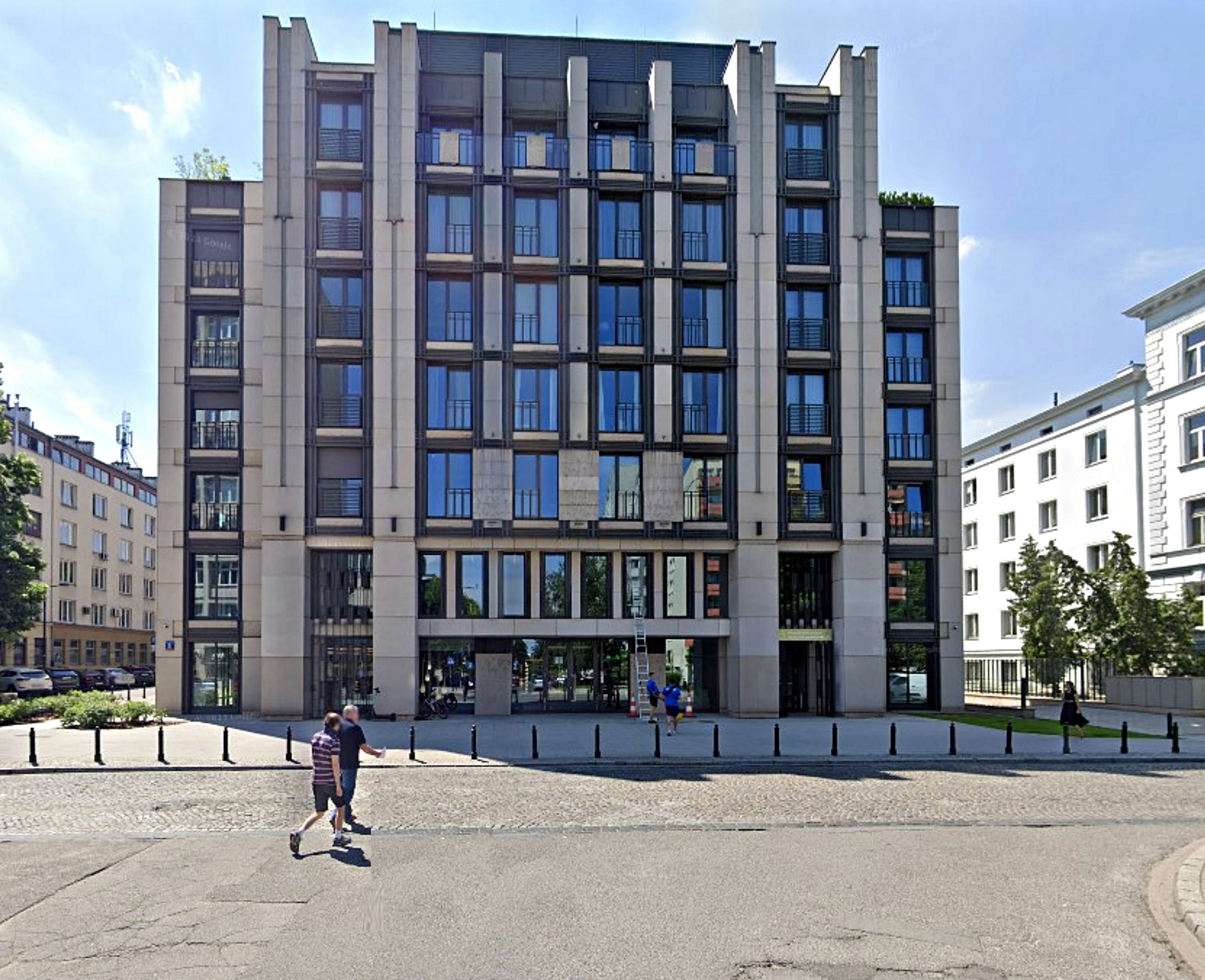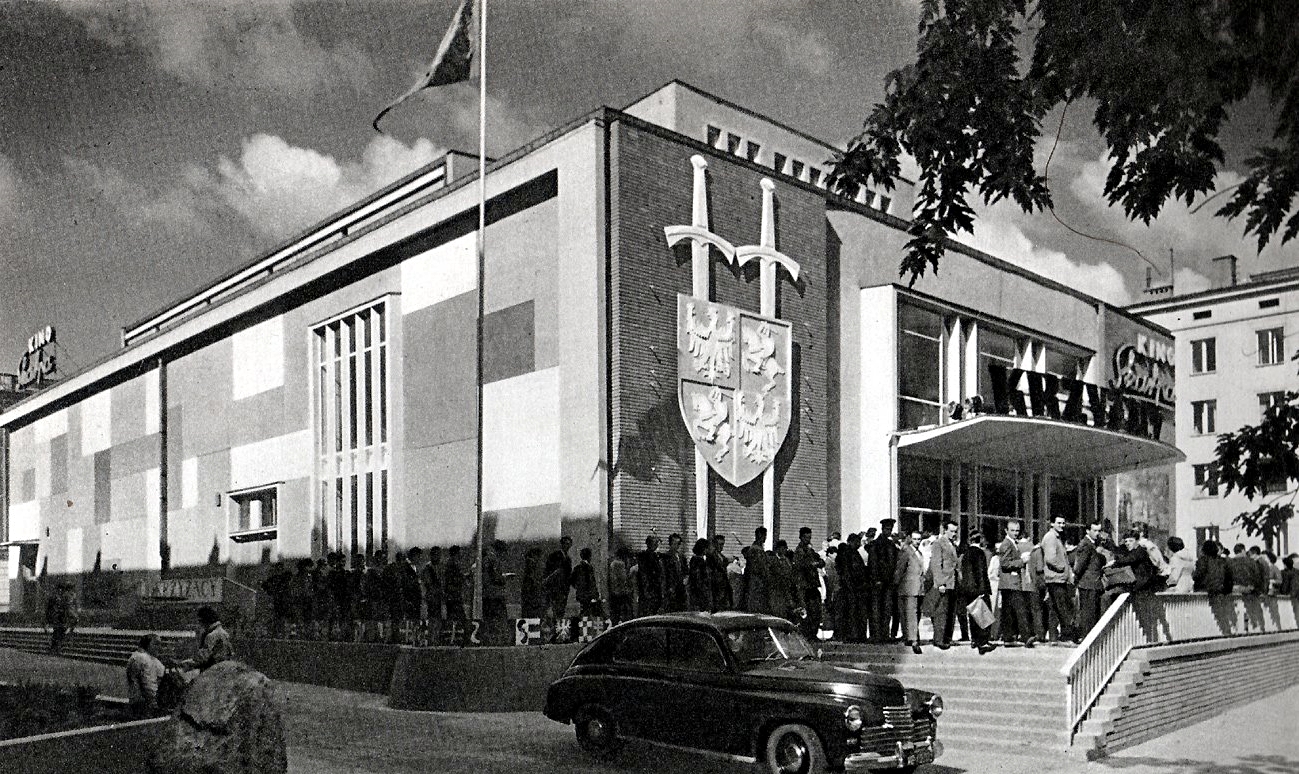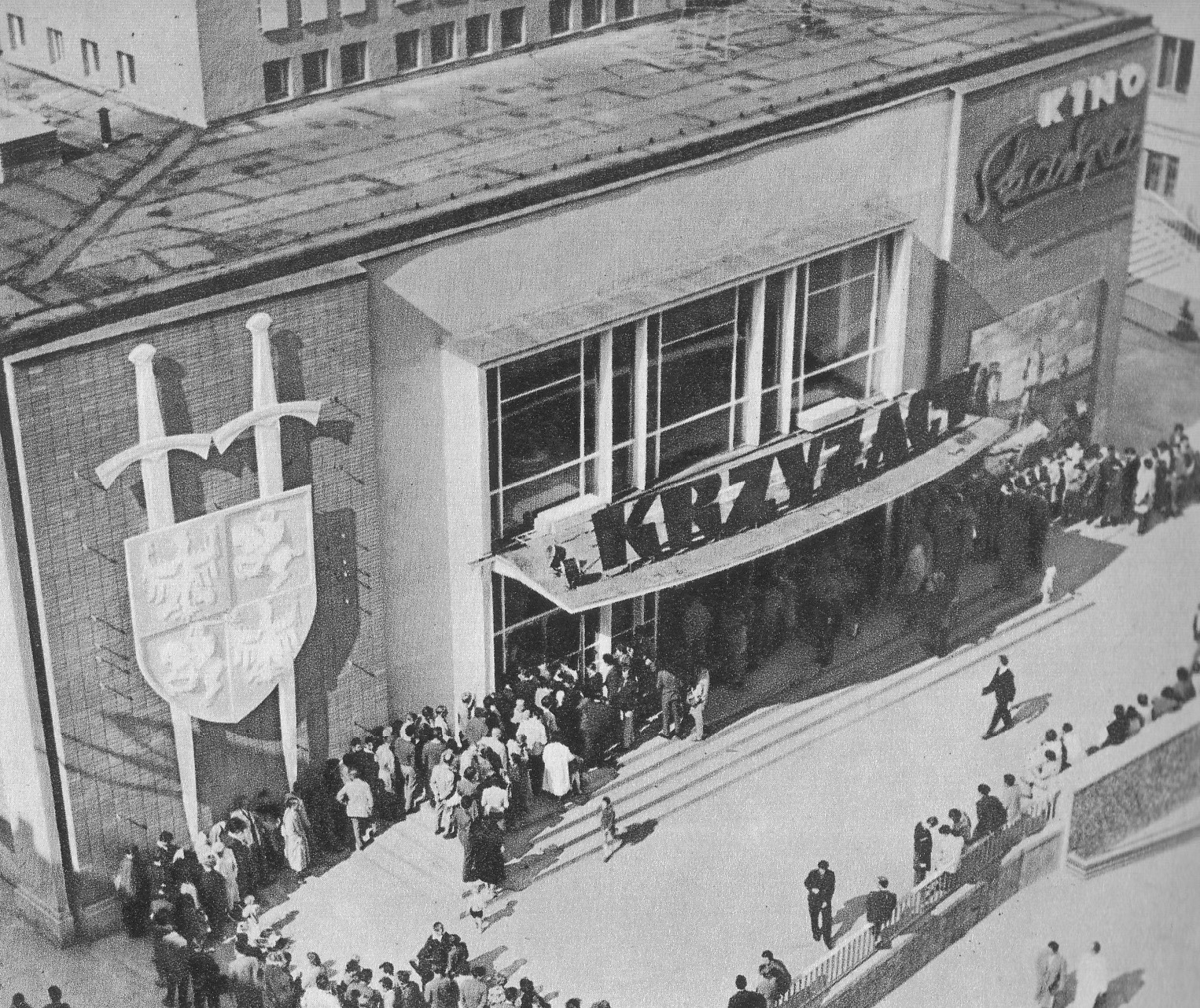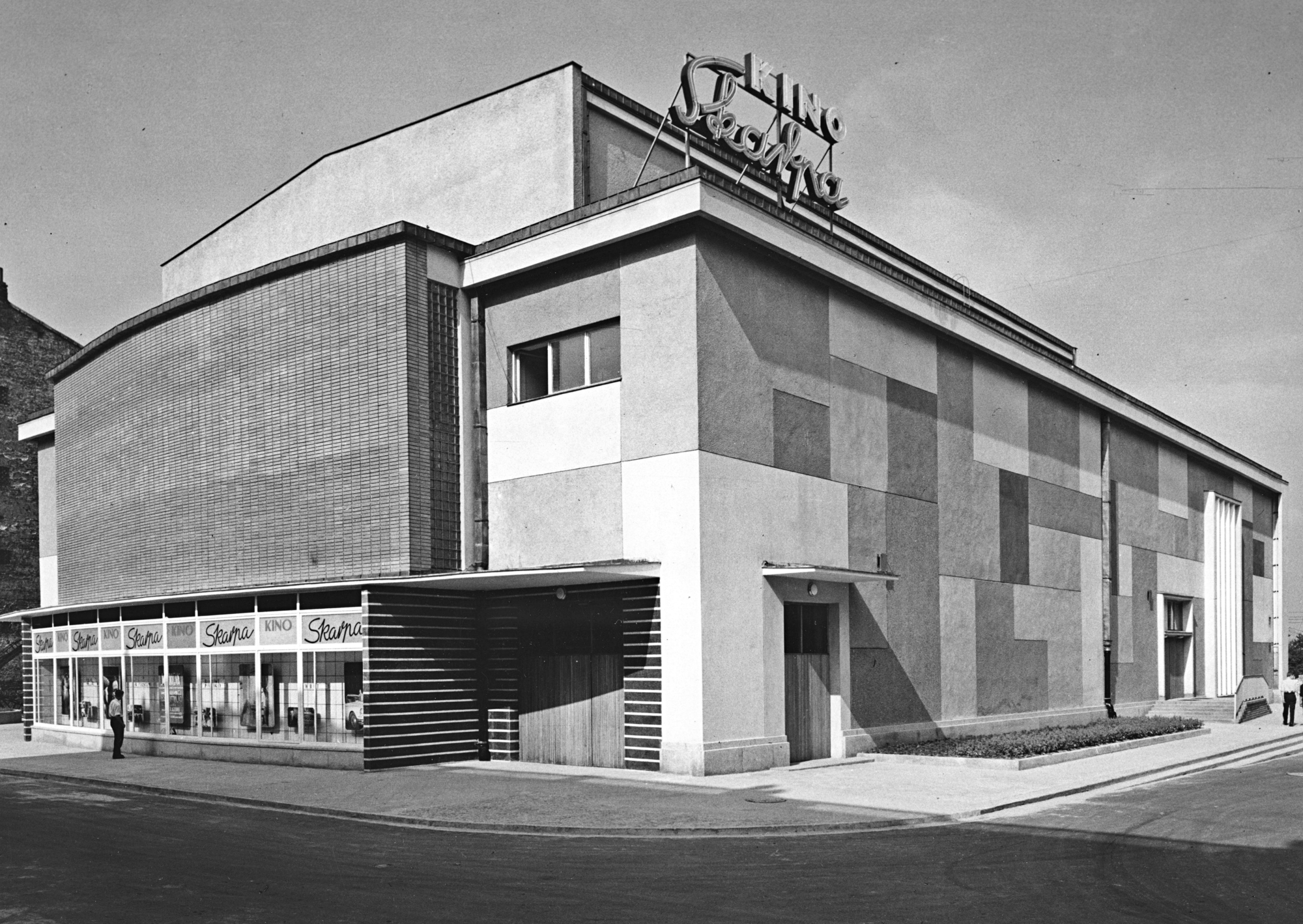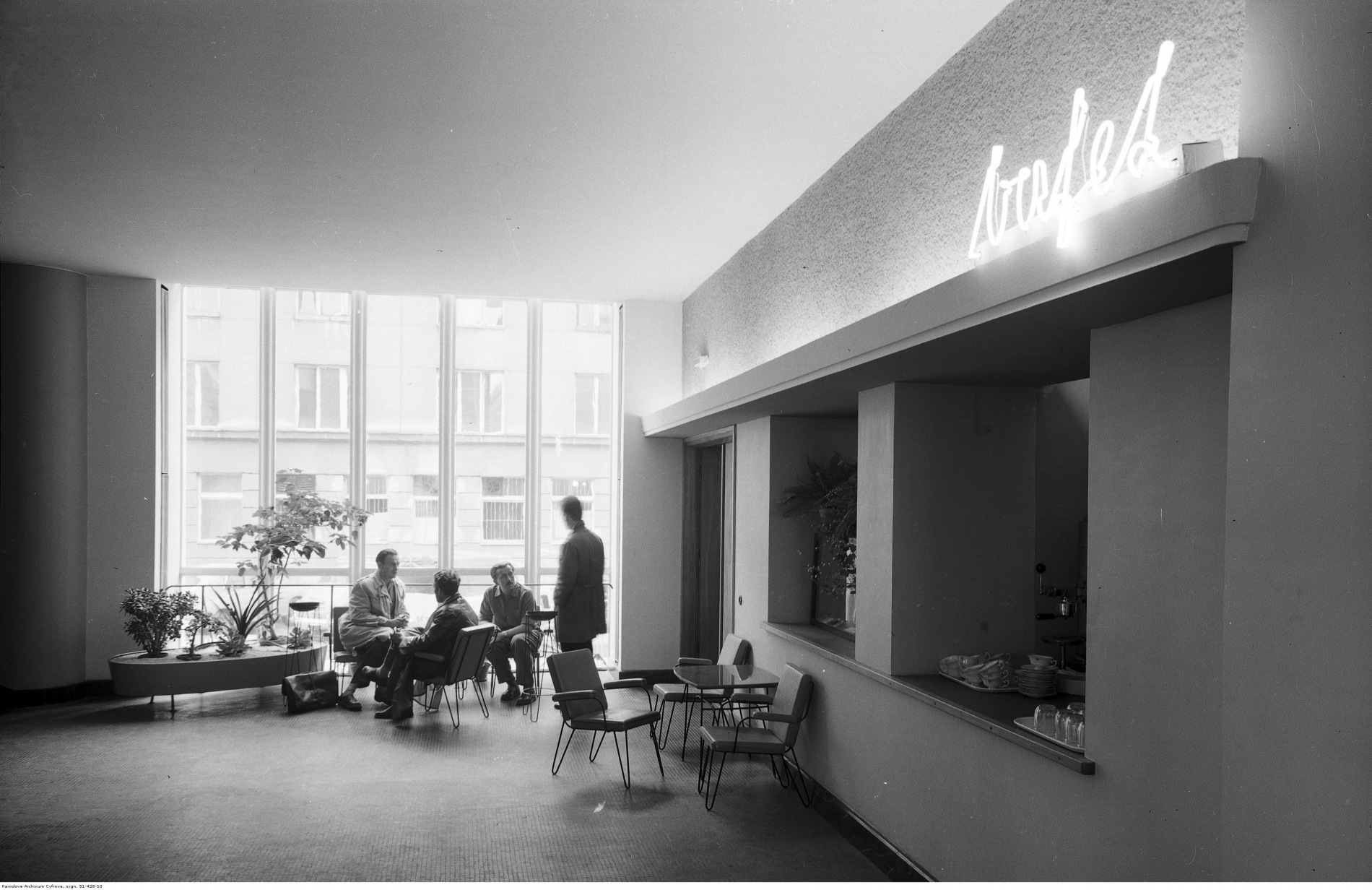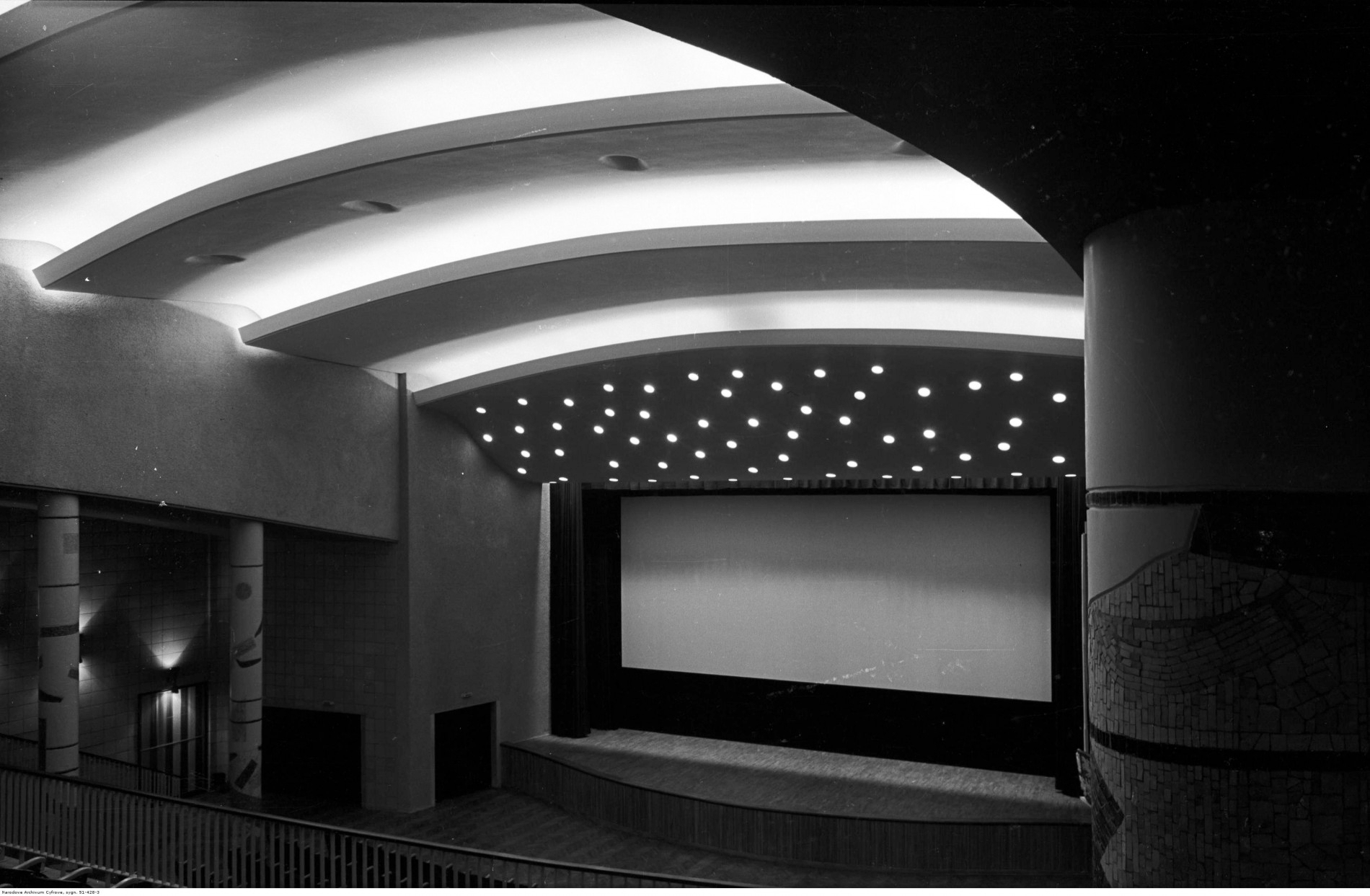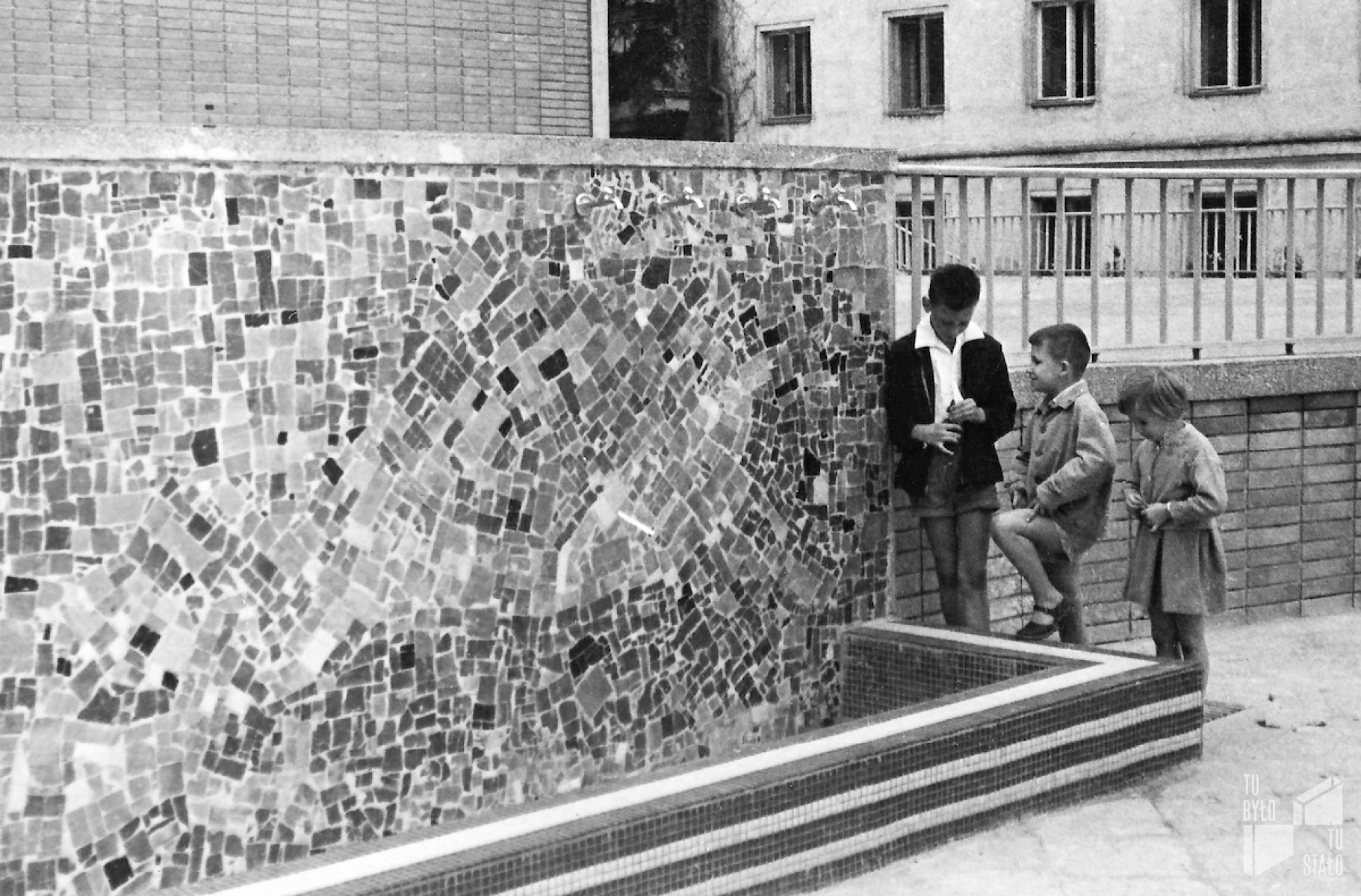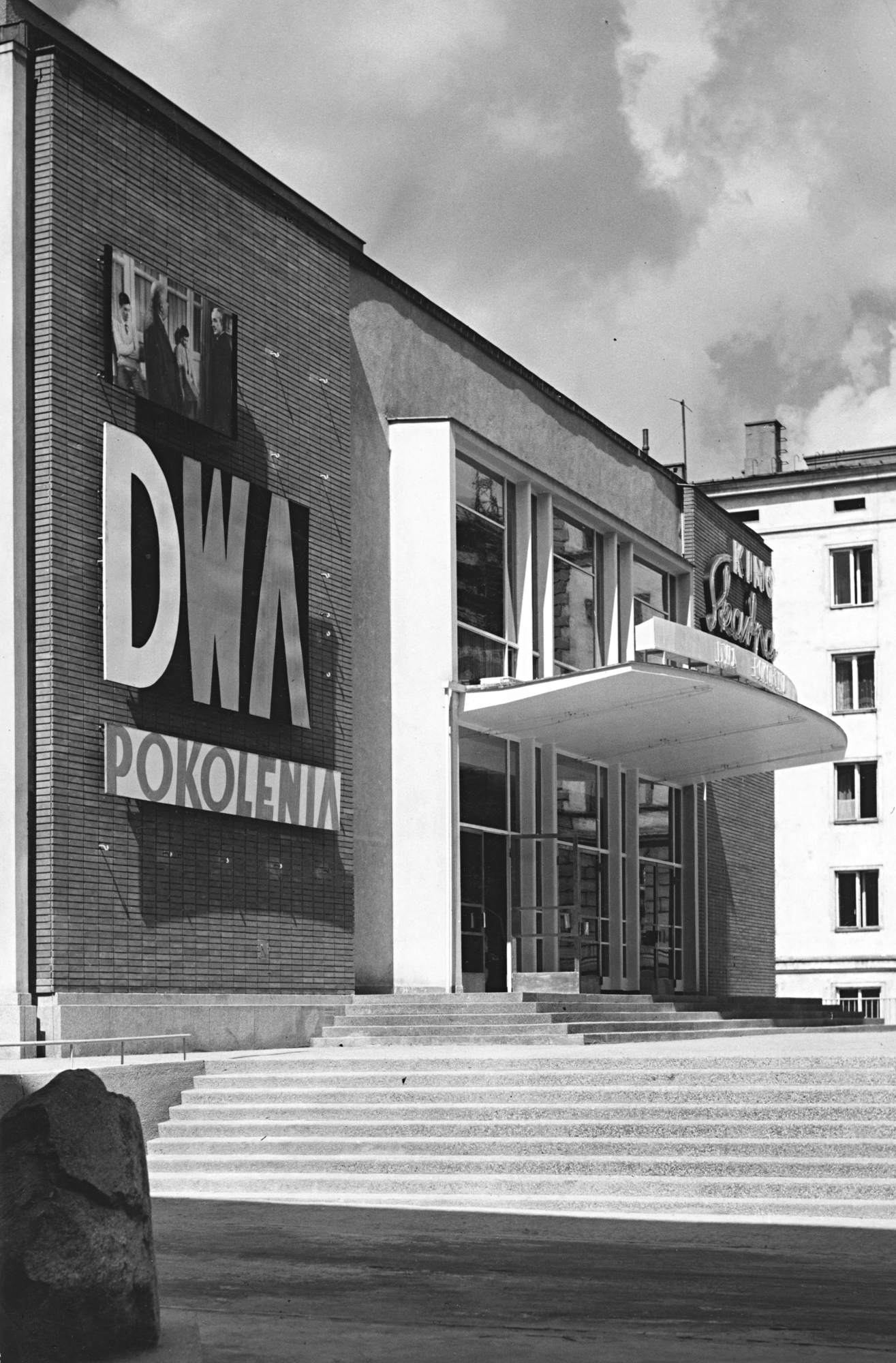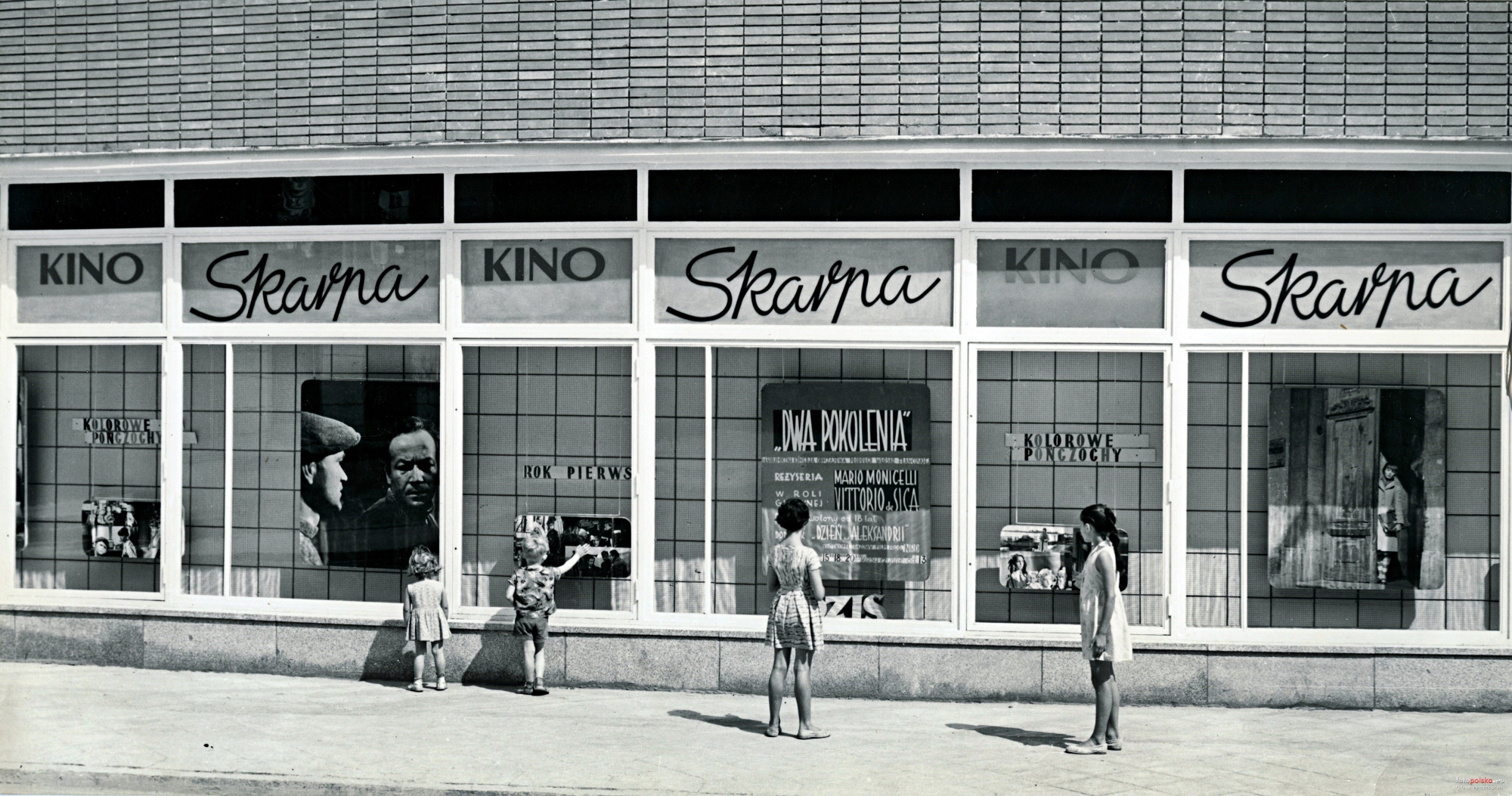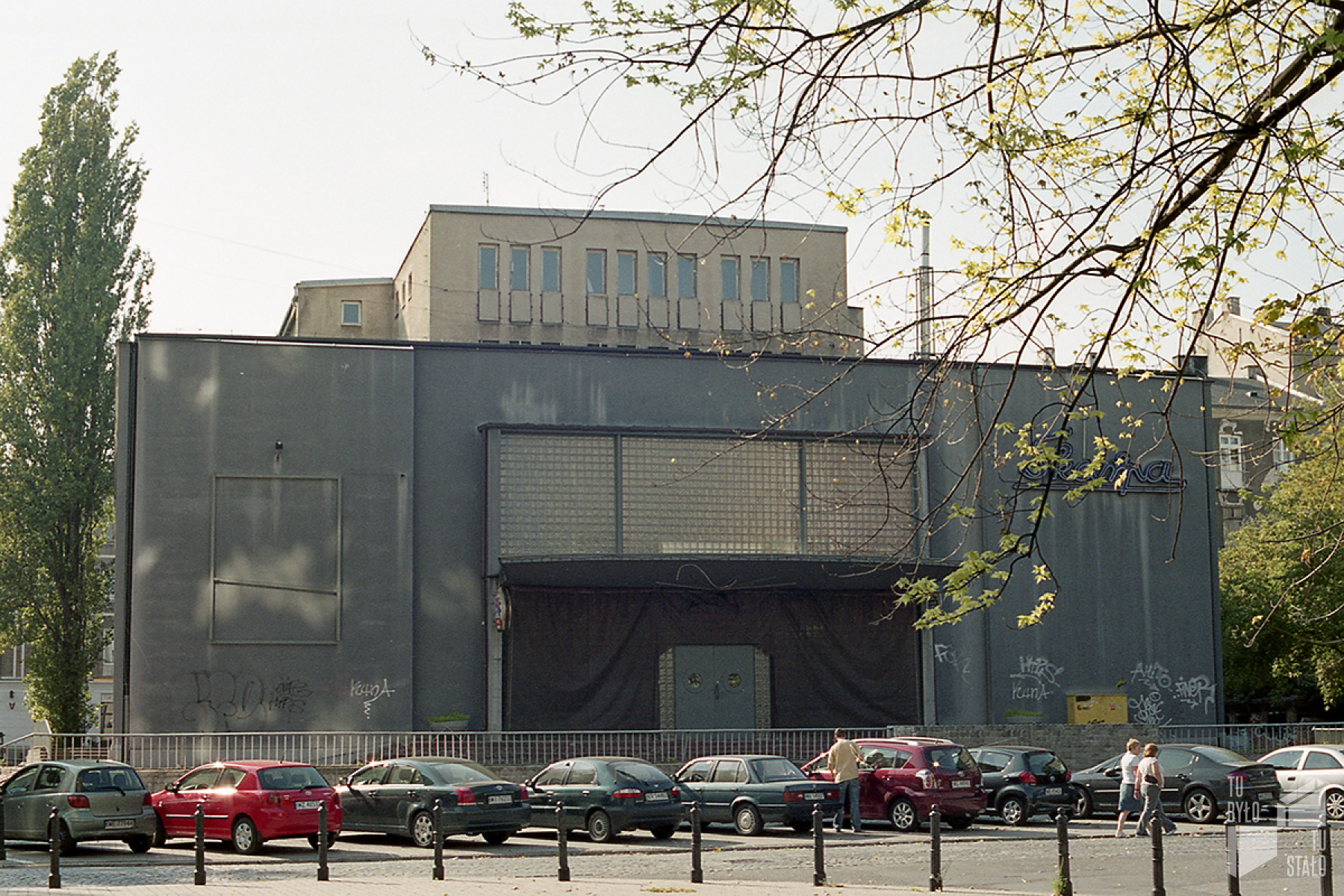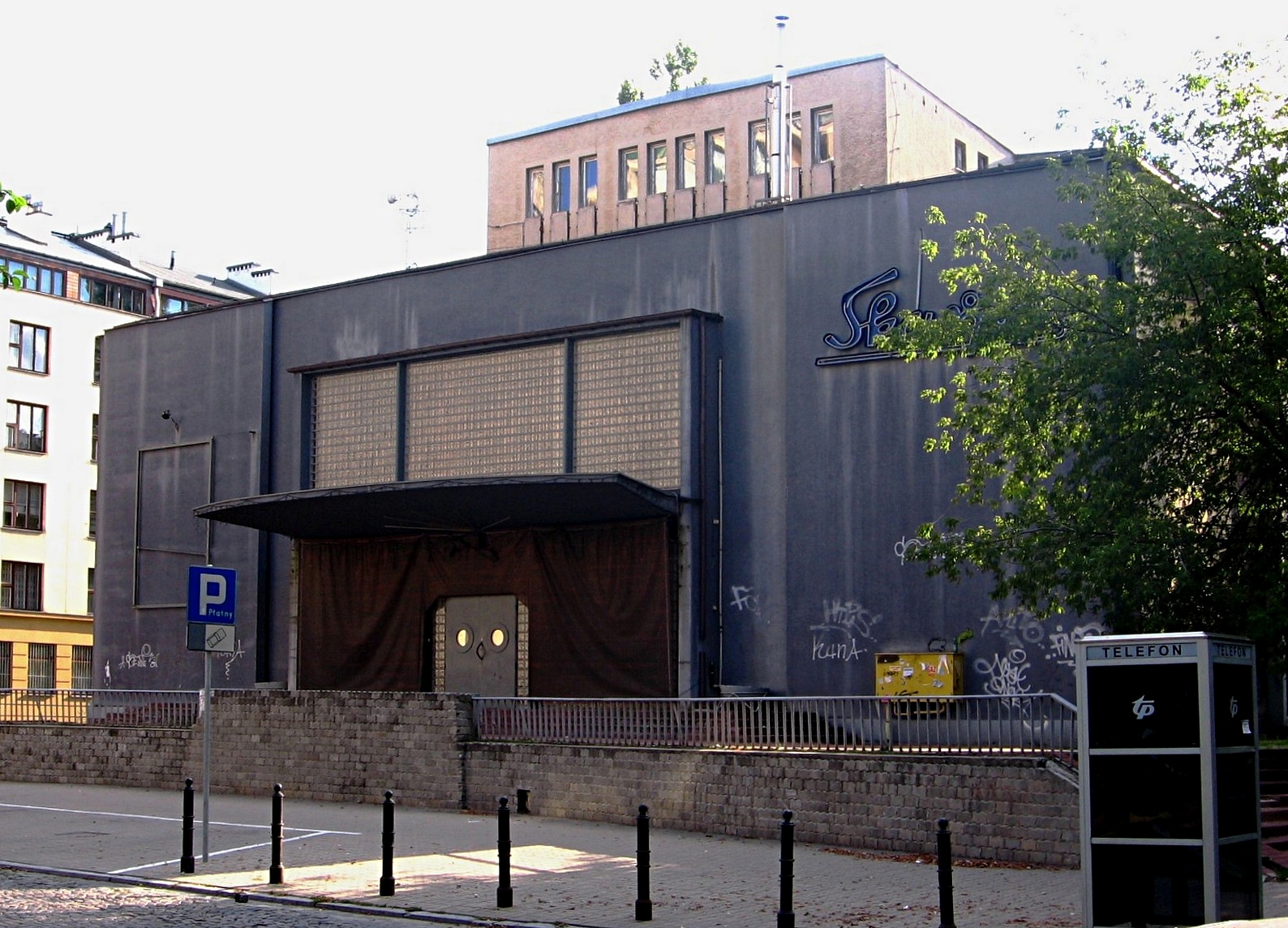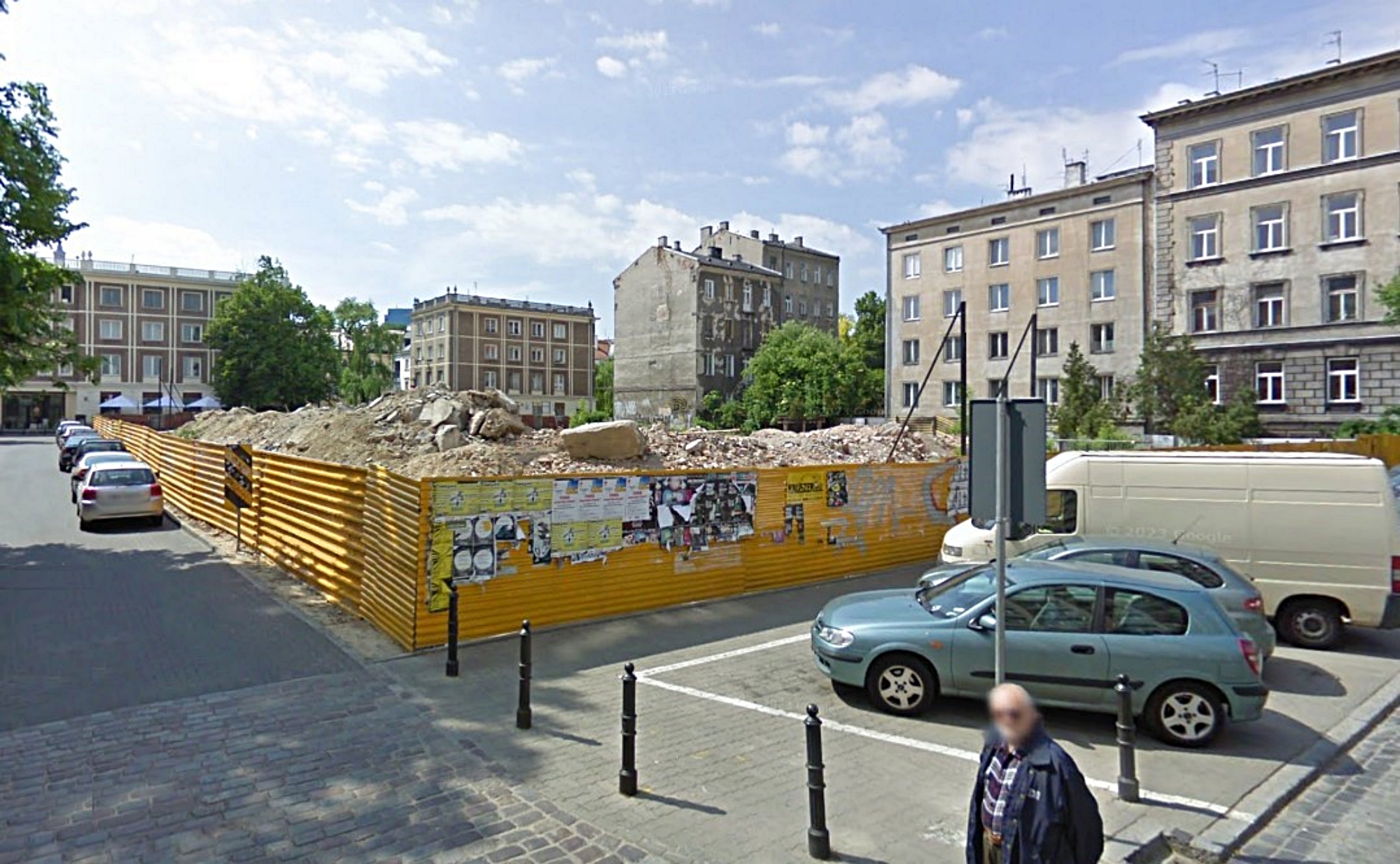The Skarpa cinema was one of the most popular buildings of its kind erected in the post-war capital. It operated from 1960 to 2003 at 5 Kopernika St. Despite its high architectural and historical value, the cinema building was demolished in 2008. An apartment building was erected in its place.
The building was erected between 1956 and 1960 in a modernist style, designed by Zygmunt Stępiński in collaboration with Andrzej Milewski. The cinema owed its name to its location near the Warsaw escarpment. It was one of the most interesting architectural buildings of its time: the original design made use of both Western European tendencies and elements of the so-called Brussels style. The building was characterised by its austere, simple form, while its interiors were decorated with numerous multi-coloured mosaics, decorations and works of art.
The premiere of “The Teutonic Knights” in Skarpa. Source: NAC – National Digital Archive www.nac.gov.pl/, Author: Zbyszko Siemaszko
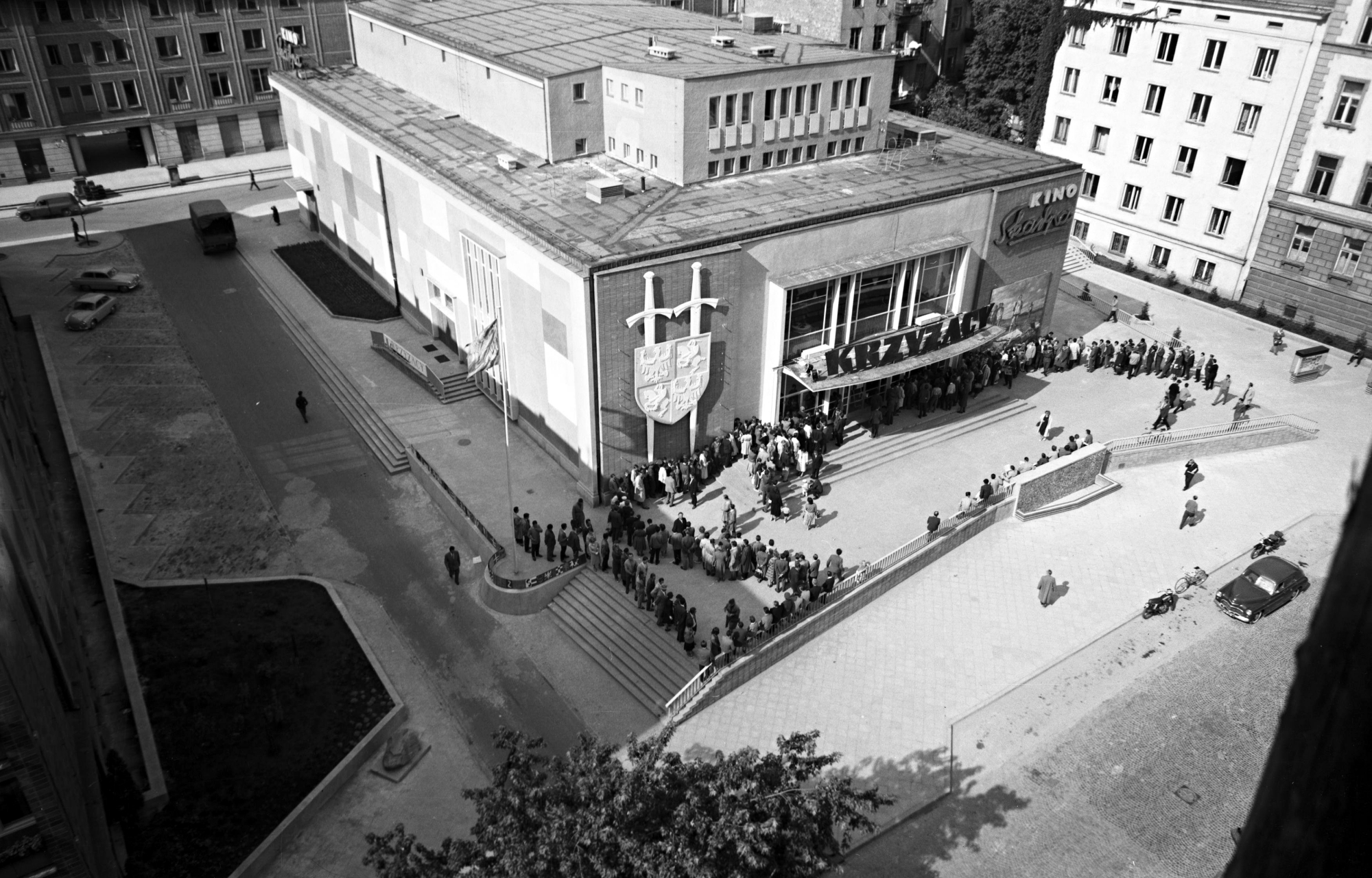
The opening ceremony of the Skarpa was held with the premiere screening of ‘Krzyżacy’, directed by Aleksander Ford. It coincided with the 550th anniversary of the Battle of Grunwald and attracted crowds; tickets were said to be waiting for weeks. In the 1970s and 1980s, the cinema hosted the Film Confrontations, a celebration of cinema lasting several days, and later the Warsaw Film Festival. High-profile film premieres and events were also held here, e.g. in 1977 the audience saw “Man of Marble” directed by Andrzej Wajda for the first time. In 1986, the venue was refurbished; among other things, the walls of the auditorium were covered with soundproof panels and the seats were replaced. The Skarpa was included in a list of post-war buildings worth saving drawn up by SARP.
The cinema in 2007 and the Rezydencja Foksal apartment building today. Photo Łeba, CC BY 3.0, via Wikimedia Commons and Google Maps
In 2003 Skarpa ceased operations and a club was opened in the building. In 2008, BBI Development NFI demolished the building and built the Rezydencja Foksal apartment building in its place. The demolition aroused emotions among Warsaw’s Powiśle residents, who were attached to the building. According to the original plans, the building was to house two cinemas, but the company Max Film, which sold the property to the developer and which was to equip and become the operator of the cinema in the newly constructed building, withdrew from the deal.
The back of the Skarpa in the 1960s and the Foksal Residence today. Photo: Museum of Warsaw and Google Maps
Some of the interior design elements of the Skarpa cinema have been preserved. The neon sign imitating the handwriting of the word Skarpa, designed by the author of the project for the whole building, has been restored and is now in the Museum of Modern Art, and the columns decorated with mosaics, designed by Krystyna Kozłowska, have been moved to the St Christopher’s Oncological Hospice in Ursynów. The original plan was to preserve the mosaics themselves, but it proved impossible to separate them from the reinforced concrete columns.
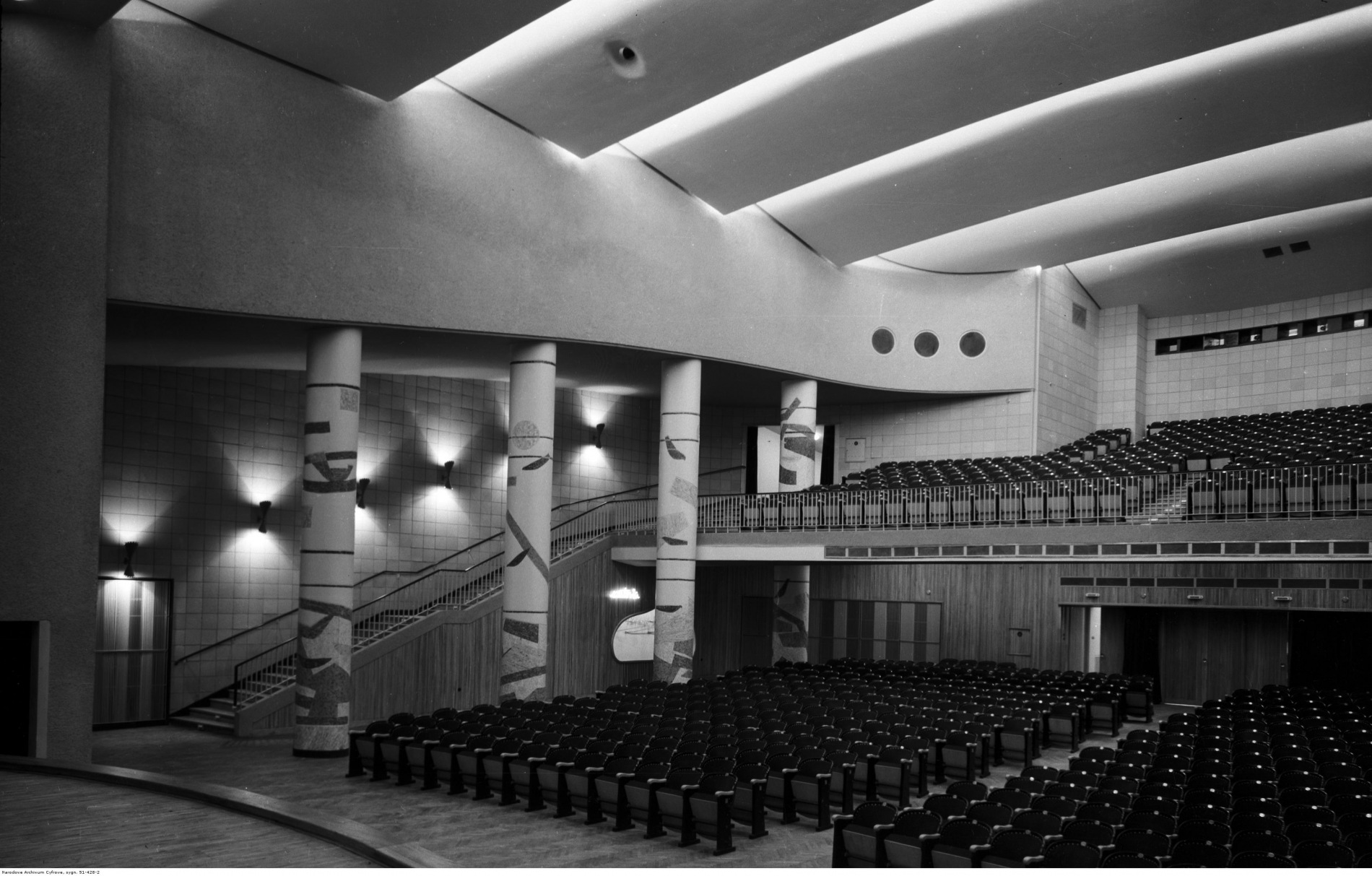
After the demolition of the building, the Zoya gallery organised the exhibition Three Bricks, where it presented a film of the demolition, shot by Artur Zdunik, and gave visitors fragments of bricks of the demolished building.
During the demolition, workers discovered a huge air raid shelter of 1,100 square metres under the floor of the Skarpa. It had probably been built before the cinema was built.
Source: topo-grafie.uw.edu.pl, obiekty.architektsarp.pl
Read also: Architecture in Poland | Socialist realism | Interesting facts | History | Warsaw

